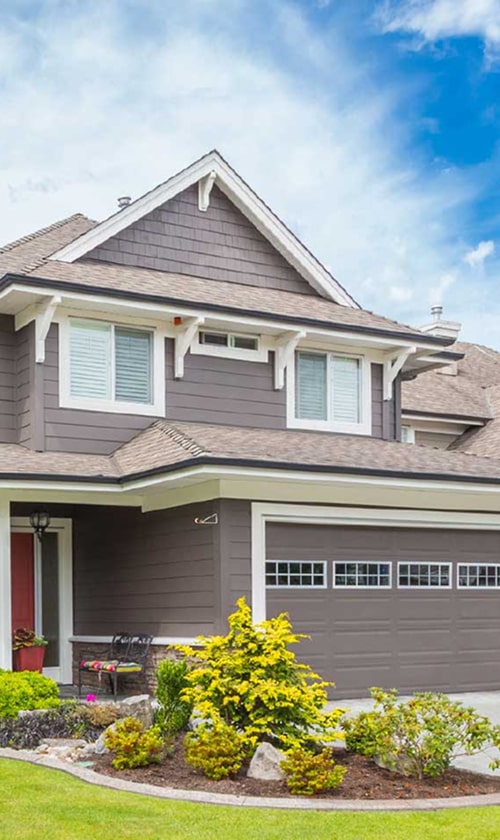Fundamentals of Proper Thermostat Installation

When we install a thermostat correctly, we help our HVAC system work at its best. A well-chosen and well-placed thermostat saves energy and cuts down on costly repairs.
Importance of Accurate Placement
Thermostat placement affects how well our heating and cooling system responds to changes in room temperature. If we put the thermostat near a window, door, or direct sunlight, it may not read the room’s temperature accurately. That can lead to our HVAC system running more often than needed or not enough.
For the best results, we should install the thermostat on an interior wall, away from vents, drafts, and heat sources. This helps it sense the room’s real conditions. Incorrect placement leads to uneven temperatures and higher power bills. By putting the thermostat in the right spot, we keep rooms more comfortable and use less energy.
Checklist for Placement:
- Avoid direct sunlight
- Stay away from vents or drafts
- Mount on interior walls
- Choose central locations
Compatibility With HVAC Systems
Our thermostat must match our HVAC system’s requirements. Not all thermostats work with all types of heating and cooling setups. For example, some smart thermostats need a common wire (C-wire) for power, while older systems might not have this wire.
We should look at the voltage (low-voltage, high-voltage, or millivolt) that our HVAC system uses. If we have a heat pump or multi-stage equipment, the thermostat must be able to control those features.
If we pick a thermostat that isn’t compatible, it may not function or could even damage our HVAC system. We can often check compatibility with guides from the manufacturer or ask a professional HVAC technician.
Common HVAC Systems and Thermostat Needs:
| HVAC Type | Typical Thermostat Needed |
|---|---|
| Gas Furnace | Low-voltage thermostat |
| Heat Pump | Special controls for heat/cool |
| Electric Baseboard | Line-voltage thermostat |
| Multi-stage Units | Programmable or smart models |
Types of Thermostats
We can choose from several thermostat types, each with different features.
- Manual thermostats are simple to use but must be adjusted by hand. Programmable thermostats let us set schedules for heating and cooling. This saves energy by letting the temperature change when we’re not home.
- Smart thermostats go further by learning our habits or letting us control them with a phone or tablet. Some models provide energy usage reports and work with other smart home devices.
The right thermostat type depends on what we want:
- Manual for basic needs
- Programmable if we want to set a schedule
- Smart for more control and potential energy savings
Before buying, we must make sure the new thermostat is a compatible thermostat for our HVAC system.
Selecting a Professional HVAC Technician
Even with a compatible thermostat, the installation process matters. DIY installation can seem easy but mistakes can damage equipment or void warranties. A professional HVAC technician has the training to connect wires correctly, test the system, and check safety settings. This ensures everything works together as it should.
We should look for certified and insured technicians with experience in thermostat installation and HVAC systems. It’s best to ask questions and get recommendations:
- Are they licensed and certified?
- Do they have experience with smart thermostats?
- Can they confirm compatibility before installation?
By having a skilled professional handle installation, we protect our HVAC system and improve our indoor comfort.
Best Practices for Thermostat Placement
Proper thermostat placement helps us keep our homes comfortable and energy-efficient. Where we install a thermostat affects how well it reads and regulates indoor temperatures.
Central Location and Interior Walls
We should install the thermostat on a central interior wall. This gives the most accurate average temperature of the whole home, instead of just one room. Placing it on interior walls avoids outside temperature swings that often affect exterior walls. Areas that we use a lot such as hallways or living rooms make ideal spots. Thermostats should be mounted about five feet above the floor for best results. Placing it too high or low can give less accurate readings because heat rises and cool air sinks.
A table for quick reference:
| Placement Type | Recommended? | Reason |
|---|---|---|
| Central, Interior Wall | Yes | Balanced temperature, fewer outside effects |
| Exterior Wall | No | Can misread due to outdoor temperature |
| High/Low Placement | No | Inaccurate due to air stratification |
Avoiding Drafts and Heat Sources
We need to keep thermostats away from drafty areas like entries, windows, and vents. Drafts cause sudden temperature shifts that can confuse the thermostat, making heating or cooling run longer than needed. Heat sources such as lamps, TVs, ovens, or even direct airflow from a heater can also cause trouble. If the thermostat is too close to these, it might think our home is warmer than it really is.
Avoid placing thermostats near kitchens, fireplaces, or bathrooms where heat and humidity often change. This helps our system run only when truly needed.
A quick checklist:
- Avoid placing near windows, doors, or air vents
- Keep away from appliances or electronics that give off heat
- Steer clear of fireplaces and kitchens
Effects of Sunlight and Airflow
Direct sunlight can quickly heat up the thermostat and throw off its reading. Even if the rest of the home is cool, the thermostat may sense only the warmth from the sun. Installing thermostats in shady areas and away from windows lowers the risk of sunlight interference. We should also be careful of airflow from fans or vents. Strong air movement can cause false temperature readings.
If not possible to avoid all sunlight, we can use curtains or blinds to block the rays during bright parts of the day. This will help maintain more accurate room readings.
- Avoid direct sunlight: Use shades and pick a wall that rarely gets sun
- Mind air vents: Strong airflow can mimic drafts or changes that aren’t real
Temperature Variations Within the Home
Temperature can change from room to room due to differences in insulation, room size, or sunlight exposure. A poorly placed thermostat might focus heating or cooling on an area that’s not truly representative of where we spend our time. We should think about common zones in the home that often feel too hot or cold. For homes with multi-zone systems, each area should have its own thermostat for the most precise control.
If we notice large temperature swings within the house, it could be because the thermostat is too close to an outside wall or near a drafty area. Repositioning it to a more central spot on an interior wall helps ensure the whole home stays more comfortable, with fewer hot or cold spots.
Optimizing Performance and Efficiency

Proper thermostat installation helps us get more reliable temperature readings, run our heating and cooling system with less waste, and make our homes more comfortable. It also allows us to set smart temperature schedules and lower our energy bills.
Accurate Temperature Readings and Calibration
It is important to place the thermostat in a central spot away from direct sunlight, drafts, or appliances that generate heat or cold. Placing the thermostat in the right area helps us get a true reading of the room’s temperature. This helps the thermostat know when to turn the heating or cooling system on and off.
Calibration is the process of making sure the thermostat displays the correct temperature. A miscalibrated thermostat can lead to setting the system too high or low. To check calibration, we can use a reliable room thermometer and compare it with the thermostat’s display. If they do not match, we should adjust the thermostat settings if the model allows, or contact a professional.
Accurate readings and good calibration are key to keeping a steady and comfortable temperature at home. They also prevent the system from running more often than needed.
System Efficiency and Optimal Performance
When our thermostat is installed correctly, the system works more efficiently. It avoids short cycling, where the heating or cooling turns on and off too often. Short cycling can use more electricity and put more wear on the system parts.
A well-installed thermostat tells the system to start and stop at the right times. This leads to optimal performance and lowers repair needs. Our air conditioning and heating also have a longer lifespan if the system runs as intended.
Here’s a quick overview of how thermostat installation impacts performance:
| Installation Factor | Potential Impact |
|---|---|
| Central Location | Even heating/cooling |
| Accurate Calibration | True temperature |
| Secure Wiring | Reliable operation |
Correct installation helps us get the most out of our equipment and saves us money over time.
Programming Temperature Schedules
A programmable thermostat lets us set different temperatures for different times of the day or week. This is helpful for reducing energy use when no one is home or at night when everyone is asleep.
We can program the thermostat to lower the heat before bed and raise it again before we wake up. During vacations or work hours, we can let the temperature drop or rise to save money, then return to normal before we get home.
Some thermostats allow us to set up to four or more daily temperature periods. Here’s a sample schedule:
- 6 a.m.: Raise temperature for morning
- 8 a.m.: Lower for empty house
- 5 p.m.: Raise for return home
- 10 p.m.: Lower for sleeping
Programming smart schedules helps us keep our home comfortable while also saving energy and lowering our monthly bills.
Common Mistakes and Safety Precautions
Setting up a thermostat may look easy, but even small errors can create big problems. Doing the job safely and accurately helps us avoid common issues and keeps our homes comfortable and secure.
Installation Mistakes to Avoid
One mistake we often see is placing the thermostat in a bad location, like near windows, direct sunlight, or air vents. This can cause wrong temperature readings and mess up our heating or cooling. Using the wrong mounting hardware is another issue. If the thermostat isn’t level or tightly secured, it may not work right. Failing to read the manufacturer’s instructions can also lead us to skip steps or miss important details during installation.
It’s important to double-check that the system is compatible with our HVAC setup. Some smart thermostats don’t work with every system. Choosing the wrong device could mean it won’t work at all. When we rush the job or skip testing the thermostat after installation, we risk dealing with problems later. Testing helps us catch mistakes right away.
Wiring Issues and Electrical Safety
Wiring mistakes can cause the thermostat to malfunction or, in some cases, lead to electrical shorts. Always turn off the power at the circuit breaker before starting. This is the most basic but critical safety step. Connecting wires to the wrong terminals is a very common error. Taking a picture of the old wiring setup before disconnecting anything helps us remember where each wire belongs.
Some thermostats need a “C-wire” for power. Not checking for this wire before installation can keep it from working right. Ignoring wire labels or mixing up wires may damage the thermostat or even the HVAC system.
Safety Checklist:
- Turn off power
- Label or take photos of existing wires
- Use the right tools
- Wear safety gloves if needed
Professional Installation Versus DIY
Hiring a licensed professional helps us avoid most installation mistakes. Professionals bring experience and can spot issues we might miss. They are trained to handle wiring safely, reducing the risk of electrical problems.
Doing it ourselves can save money, but it’s important to be honest about our skill level. Some jobs are harder than they look, especially with newer smart thermostats that may need complex wiring.
If we choose DIY, we should follow every instruction and not skip safety steps. But when in doubt, calling a professional is the safer choice. This helps us protect our home and HVAC system from damage or hazards.
Long-Term Benefits of Proper Thermostat Installation
Proper thermostat installation helps us keep our homes comfortable, lowers our energy bills, and makes it easier to care for our heating and cooling systems. Small installation mistakes can add up to wasted money, extra work, and less comfort.
Energy Savings and Cost Reduction
A well-installed thermostat makes our energy usage more efficient. Accurate thermostats turn our heating and cooling systems on and off at the right times, so we don’t waste energy. If the thermostat is off by just a few degrees or put in the wrong spot, we may use more energy than we need.
When the thermostat is installed away from drafts and direct sunlight, it reads the room temperature correctly. This helps our air conditioner and heating systems run only when required.
Common causes of extra costs include:
- Poor thermostat placement
- Loose wiring
- Inaccurate temperature readings
By fixing these issues during installation, we see lower monthly utility bills. Over a year, this can save us significant money on both heating and cooling costs.
Improved Home Comfort
When our thermostat works as it should, room temperatures stay steady. We avoid hot and cold spots that can make some rooms uncomfortable.
A properly installed thermostat is easy to program. We can set schedules that match our daily routines, making our living spaces comfortable when we need them to be. This also means our energy usage fits our real needs, not just running all the time or turning on too late.
With better control, every area of our house can feel more comfortable. Places that once felt too cold in winter or too warm in summer become much more pleasant.
Supporting Regular HVAC Maintenance
Correct thermostat installation helps our HVAC systems run more smoothly. The HVAC system, which includes the air conditioner, heating systems, and ductwork, works best when the thermostat sends clear, accurate signals.
We are more likely to notice if something is wrong, such as the house not heating or cooling as it should. This early warning lets us schedule maintenance before a small issue gets worse.
When the HVAC system doesn’t have to overwork to follow wrong signals, it lasts longer. We save money on repairs and major replacements, and our equipment stays in good condition. This careful maintenance leads to better energy efficiency and lower energy costs for us.




